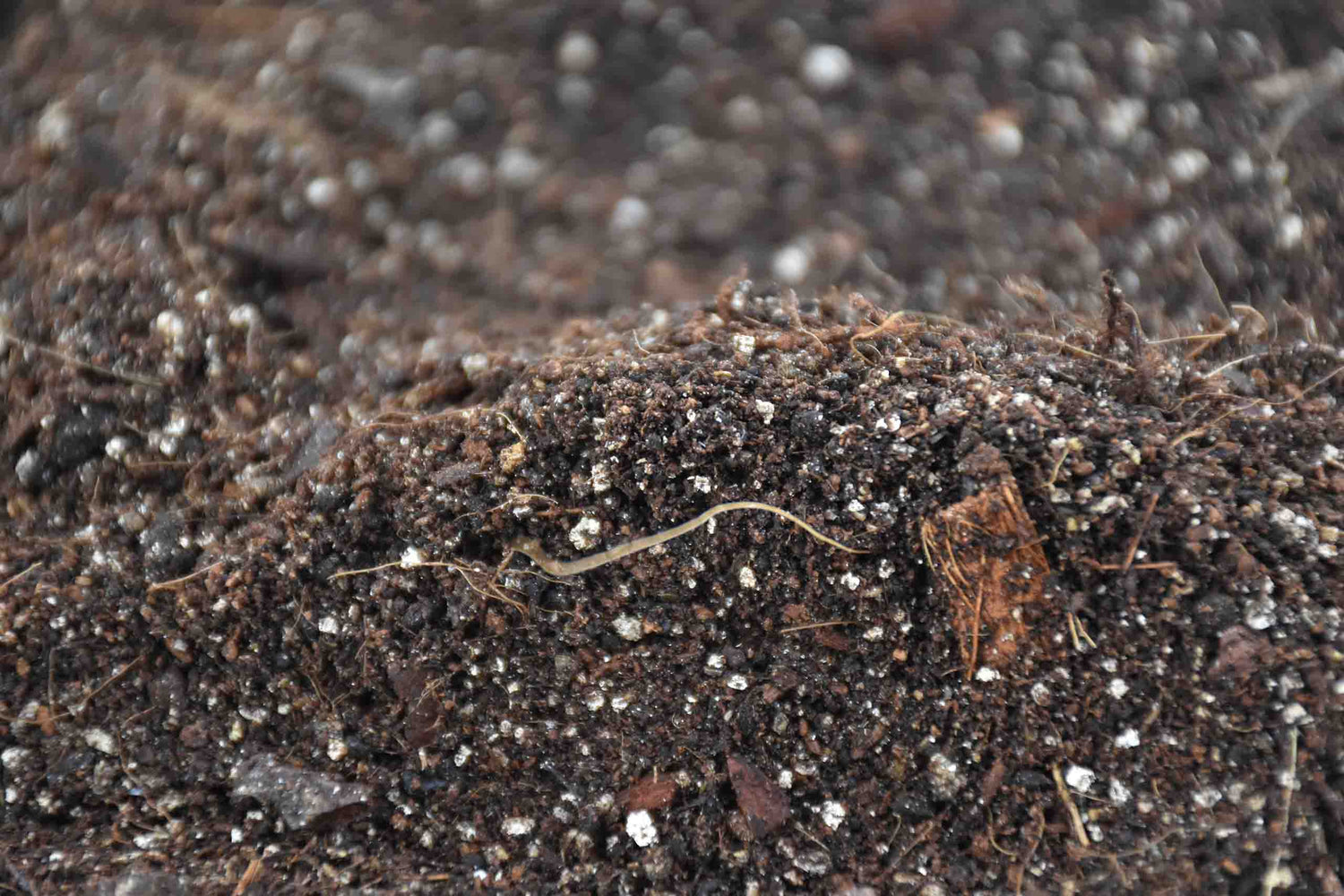
SYBASoil: Premium Soil Mixes
Handmixed coconut-based soil blends for your plants. Give your plants the soil...

Handmixed coconut-based soil blends for your plants. Give your plants the soil...
€0,00 EUR
Order before 16:30 on working days = Shipped today
100% satisfaction guarantee
The expert in soil
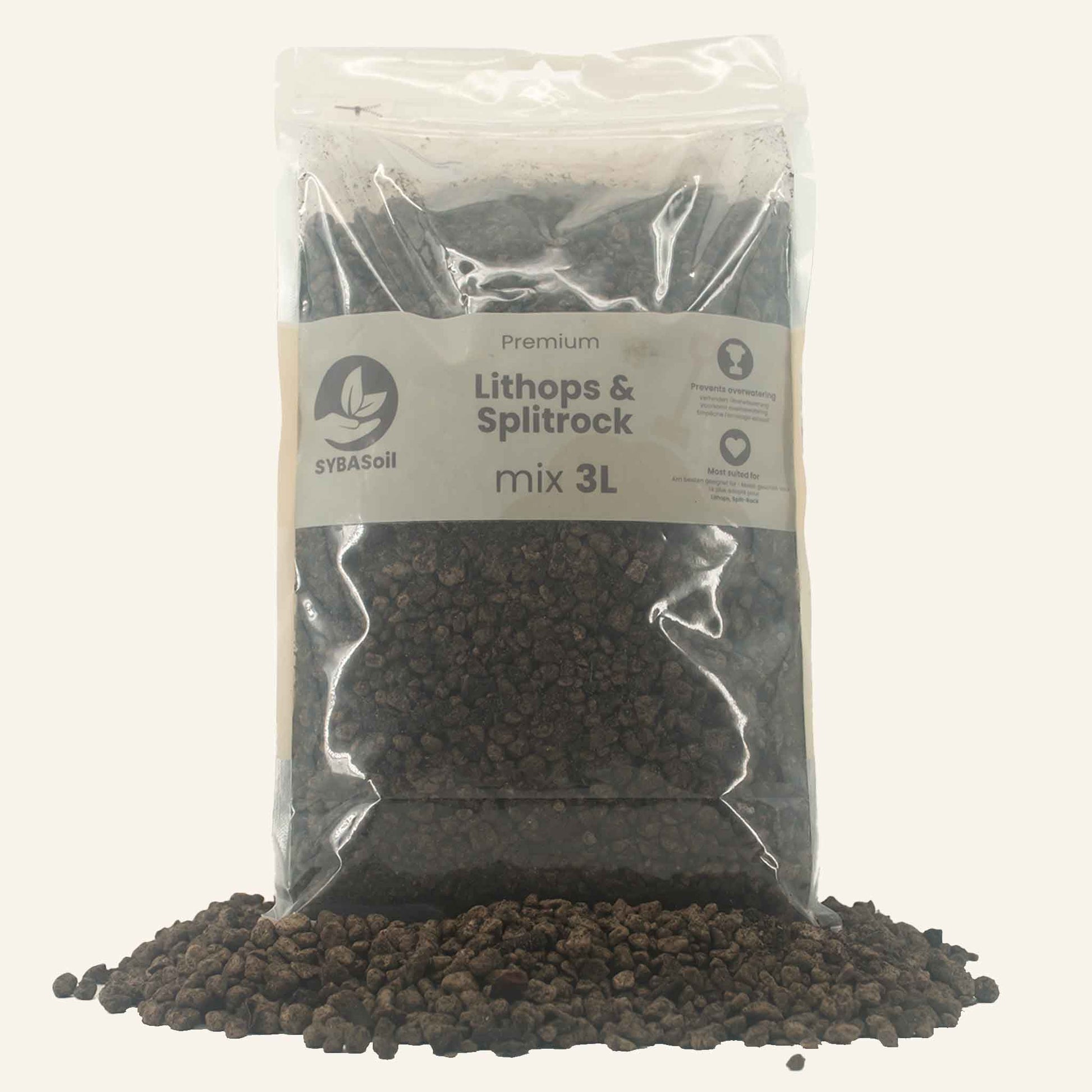
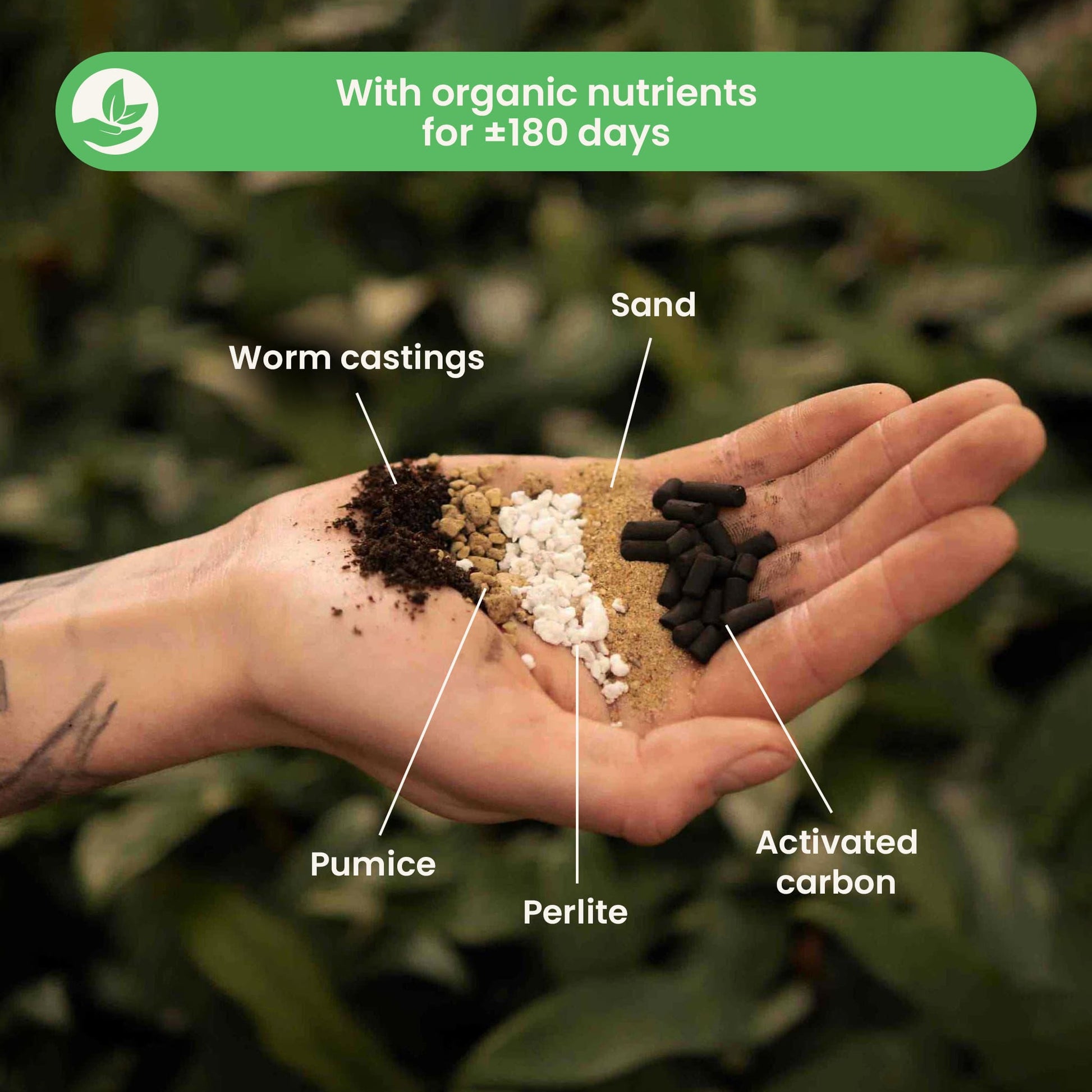
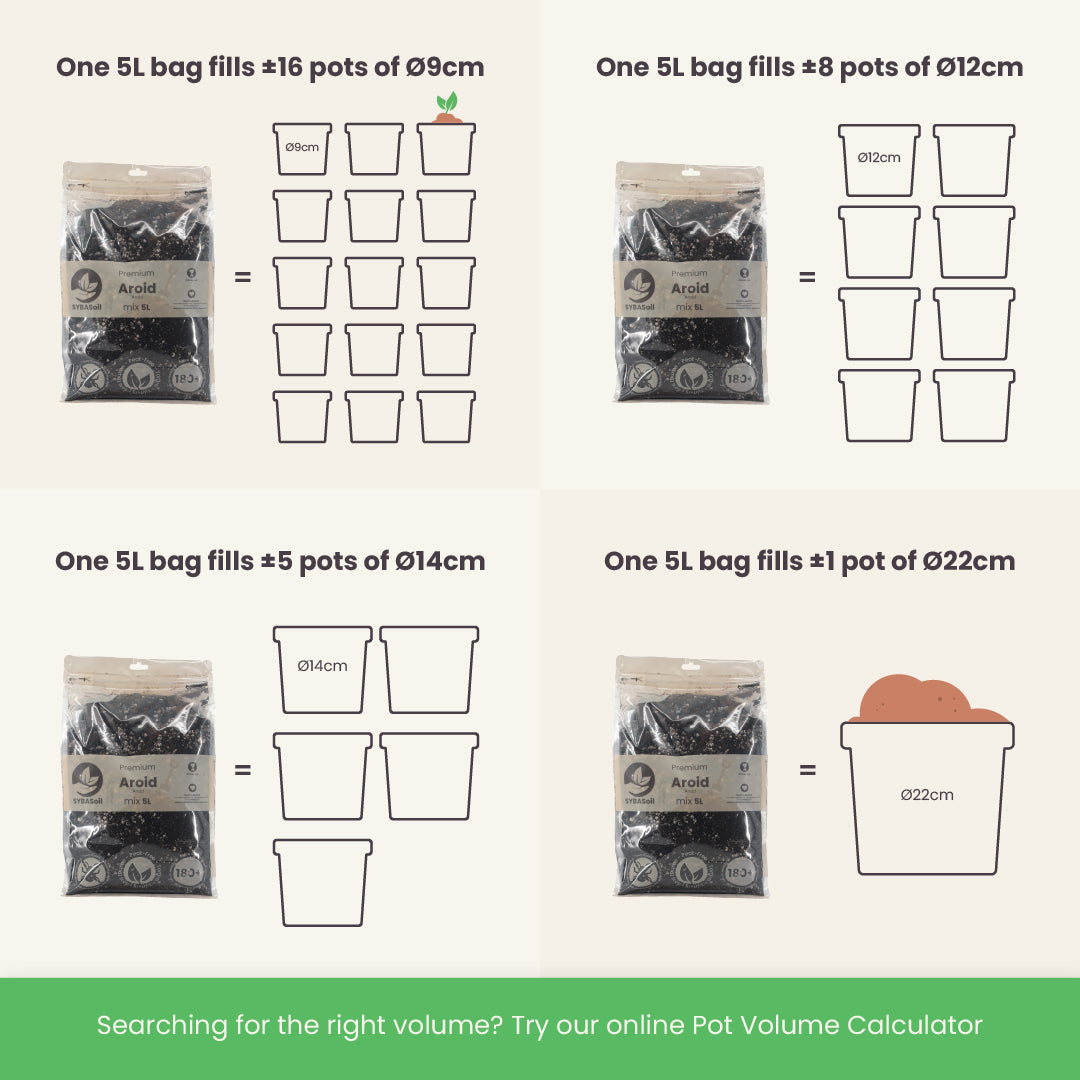
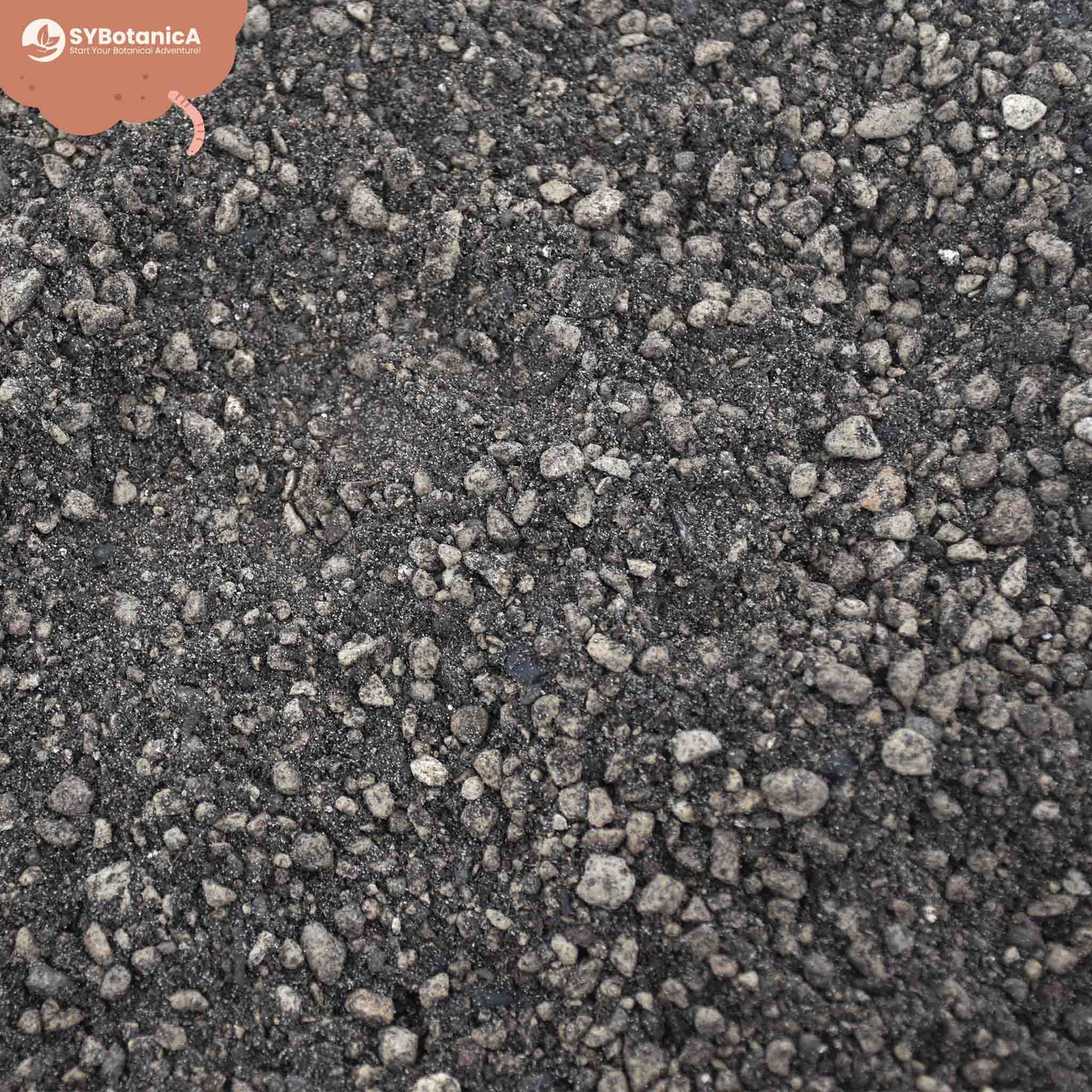
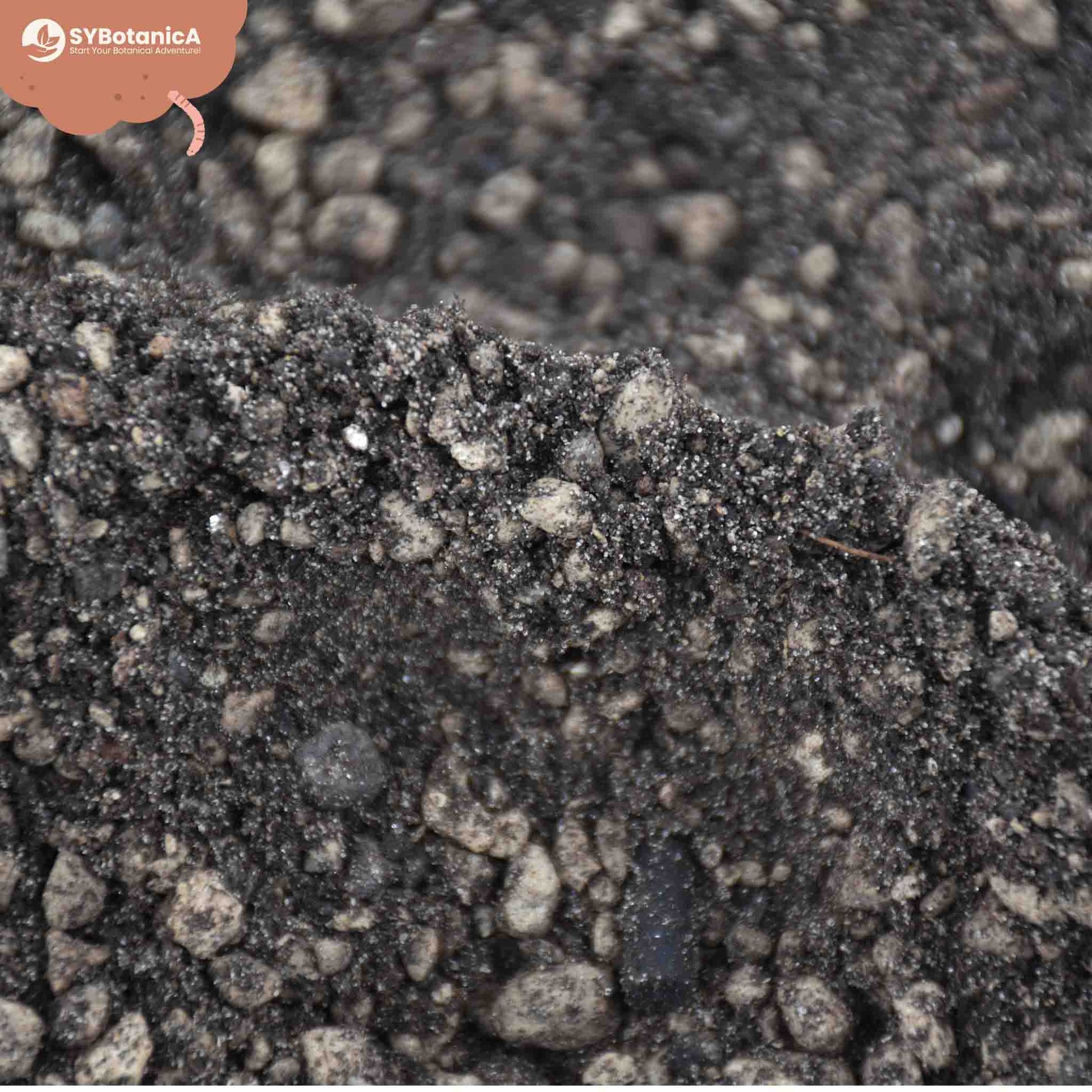
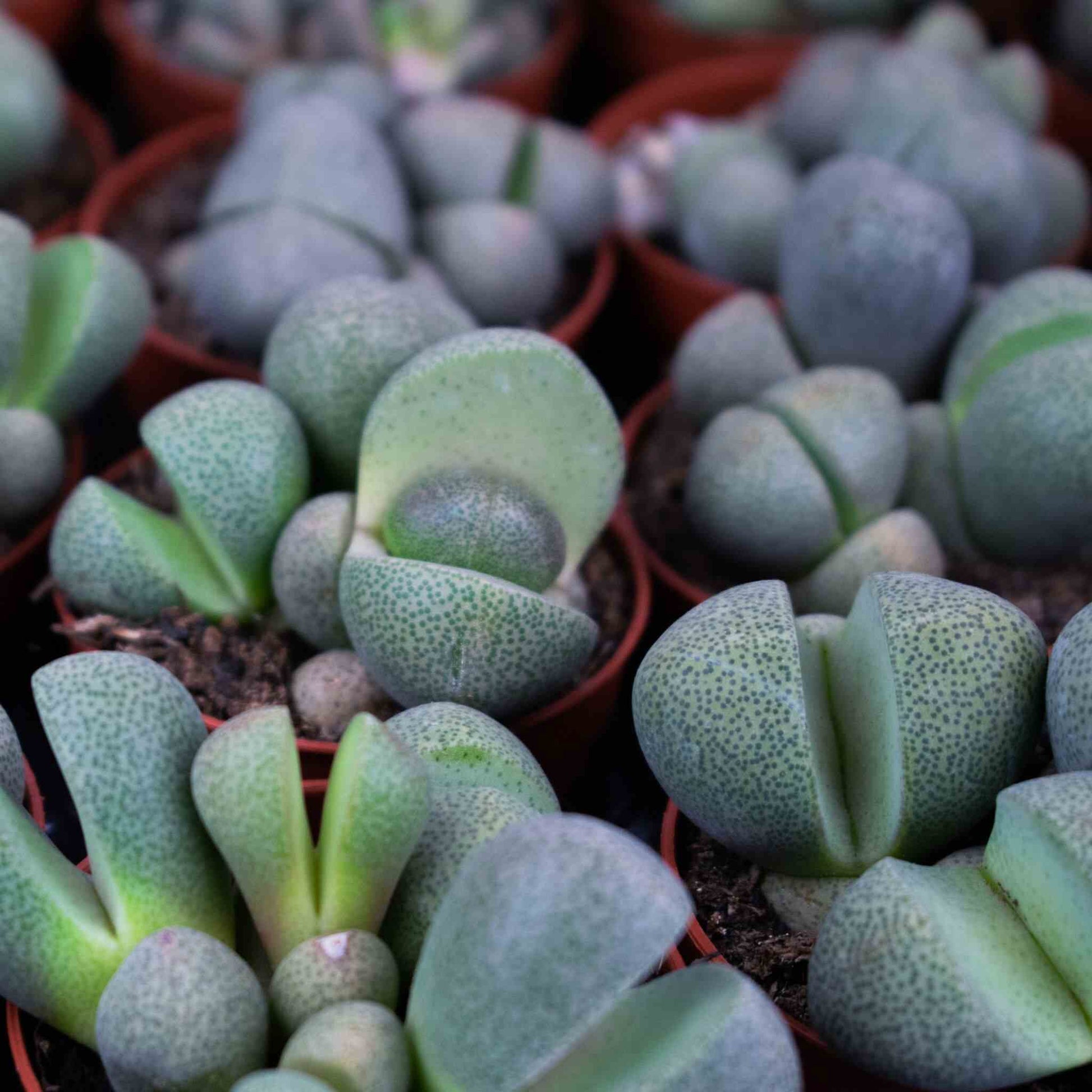
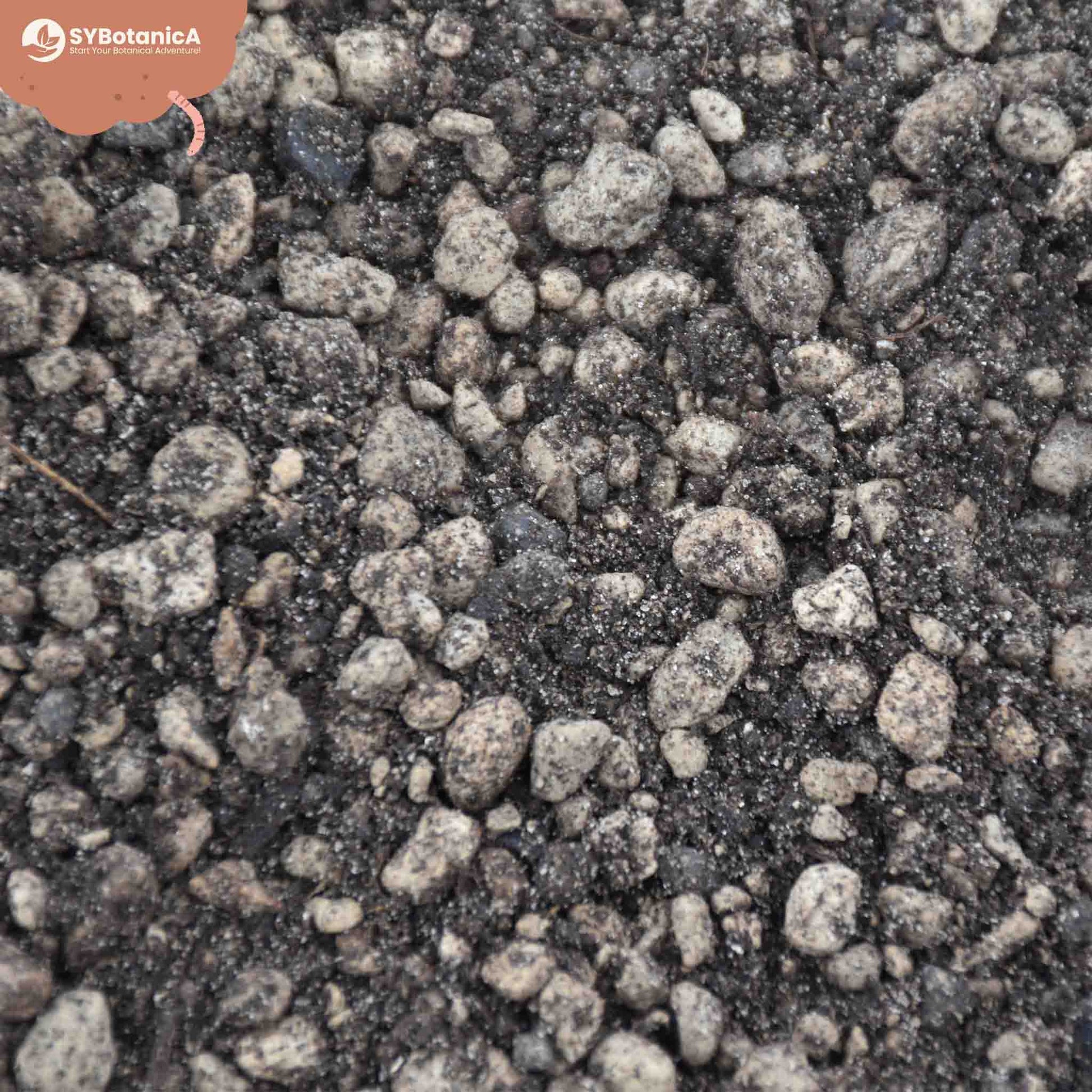
Using the mix is easy! start with removing as much of the old soil as possible. Gently squeeze the pot while holding it sideways to loosen up the plant. Run the roots under lukewarm tap water to remove the last pieces and bits.
Also, make sure to remove any dead foliage that may still be on the plant using scissors. Now your plant is ready for its fresh Lithops soil. Add a small layer of Lithops mix at the bottom of the pot.
Place the plant in the pot, and slowly add Lithops soil to the sides to fill it up. Make sure that the point where the roots meet the plant is just buried under the Lithops soil.
Lightly pat the Lithops mix down into the pot. Make sure to water the Lithops mix thoroughly after repotting, as this helps settle the mix and roots down.
The lithops mix drains very quickly because of the perlite & pumice, the sand helps weigh the plants down and the small number of worm castings assist in holding onto a bit of water when you do water so that they have ample time to take a drink.
Lithops originate from rocky, sandy deserts where the sun is plenty and water is sparse. They rely on sparse rainfalls and some species even solely rely on mist! They thrive in well-draining soil consisting mainly of rocks & sand. This lithops mix mimics that environment
Lithops require very little water and nutrients. It is advised to only water your lithops once a month in the summer, and stop watering completely around the start of winter. A good way to check is if the lithops is starting to wrinkle, that means it is ready for another drink. It does not require a lot of fertilisers, but can be fed during the blooming season to encourage flower growth.
Lithops prefer lots of early morning sun, and partial shade during the afternoon. While they do need lots of light, the heat of the sun can cause burns & damage their foliage.
To mix yourself, take a scoop or cup and use it to measure out 1 part. Add the above ingredients to the parts and mix thoroughly.
Don't be afraid to experiment with what works best for your plant!
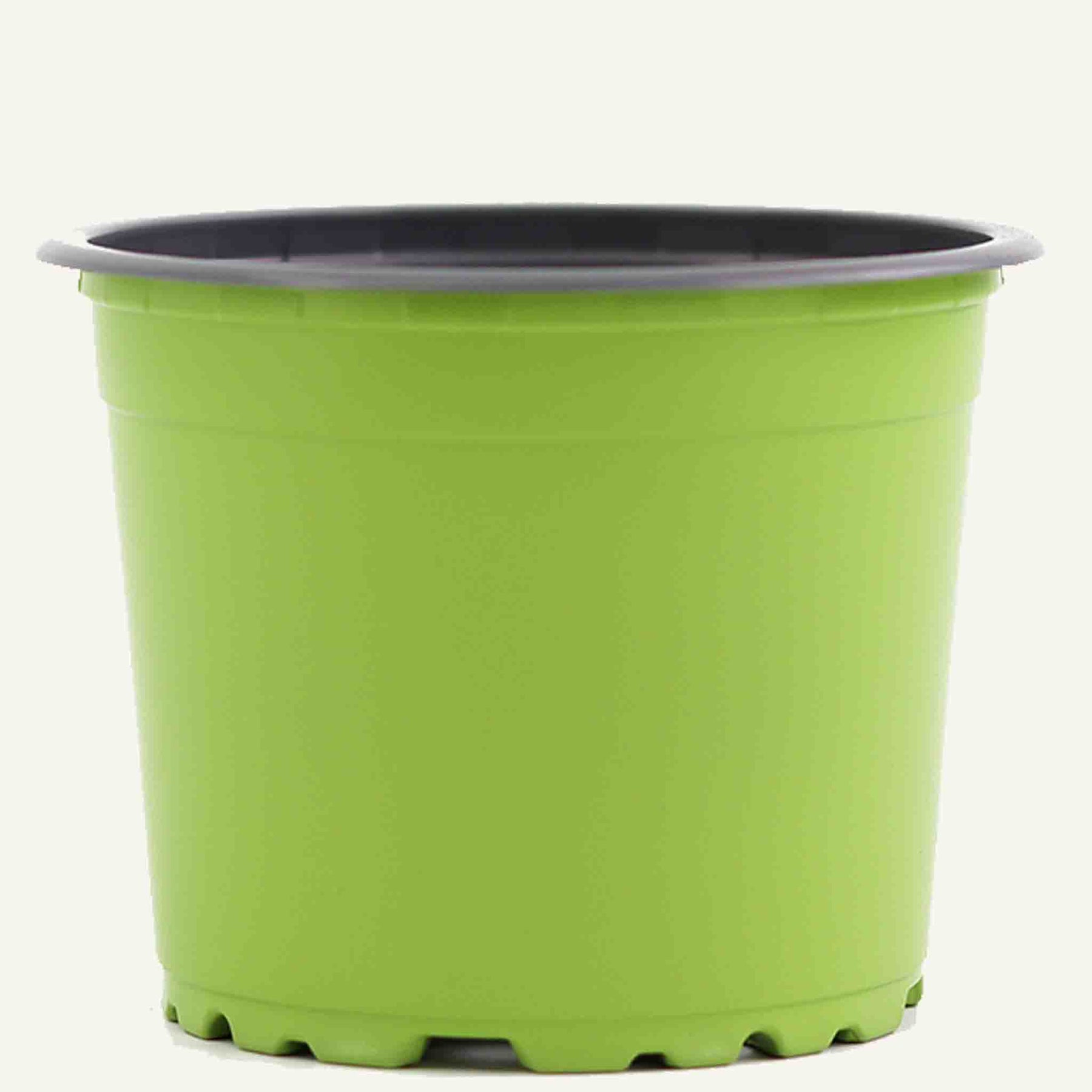
If the pot is differently shaped (Square, oval, e.t.c.), the calculations might not be accurate. You can also check out the plant pots product pages to check their total volume.
| Value's (EN) | Lithops Mix |
|---|---|
| EC | 1,3 |
| pH | 7,6 |
| NPK (mg/L) | 219 - 1 - 82 |
| Bioactive? | yes |
| Safe for pets? | no, contains fertilizer and activated carbon which can be harmful if ingested |
| Organic matter % | 9% |
| Dry matter % | 91% |
| Water retention capacity % | 4% |
| Structural stability | 5+ Years, as this only depends on fertilizer/worm compost availability |
Premium SYBASoil
Keeps Lithops happy. Drains quickly, low in nutrients, replicating their natural environment.
In stock
Couldn't load pickup availability
🌿 100% Satisfaction Guarantee Or Your Money Back !
Using the mix is easy! start with removing as much of the old soil as possible. Gently squeeze the pot while holding it sideways to loosen up the plant. Run the roots under lukewarm tap water to remove the last pieces and bits.
Also, make sure to remove any dead foliage that may still be on the plant using scissors. Now your plant is ready for its fresh Lithops soil. Add a small layer of Lithops mix at the bottom of the pot.
Place the plant in the pot, and slowly add Lithops soil to the sides to fill it up. Make sure that the point where the roots meet the plant is just buried under the Lithops soil.
Lightly pat the Lithops mix down into the pot. Make sure to water the Lithops mix thoroughly after repotting, as this helps settle the mix and roots down.
The lithops mix drains very quickly because of the perlite & pumice, the sand helps weigh the plants down and the small number of worm castings assist in holding onto a bit of water when you do water so that they have ample time to take a drink.
Lithops originate from rocky, sandy deserts where the sun is plenty and water is sparse. They rely on sparse rainfalls and some species even solely rely on mist! They thrive in well-draining soil consisting mainly of rocks & sand. This lithops mix mimics that environment
Lithops require very little water and nutrients. It is advised to only water your lithops once a month in the summer, and stop watering completely around the start of winter. A good way to check is if the lithops is starting to wrinkle, that means it is ready for another drink. It does not require a lot of fertilisers, but can be fed during the blooming season to encourage flower growth.
Lithops prefer lots of early morning sun, and partial shade during the afternoon. While they do need lots of light, the heat of the sun can cause burns & damage their foliage.
Fair Production - Handmade in our social workplace
To mix yourself, take a scoop or cup and use it to measure out 1 part. Add the above ingredients to the parts and mix thoroughly.
Don't be afraid to experiment with what works best for your plant!

If the pot is differently shaped (Square, oval, e.t.c.), the calculations might not be accurate. You can also check out the plant pots product pages to check their total volume.
| Value's (EN) | Lithops Mix |
|---|---|
| EC | 1,3 |
| pH | 7,6 |
| NPK (mg/L) | 219 - 1 - 82 |
| Bioactive? | yes |
| Safe for pets? | no, contains fertilizer and activated carbon which can be harmful if ingested |
| Organic matter % | 9% |
| Dry matter % | 91% |
| Water retention capacity % | 4% |
| Structural stability | 5+ Years, as this only depends on fertilizer/worm compost availability |
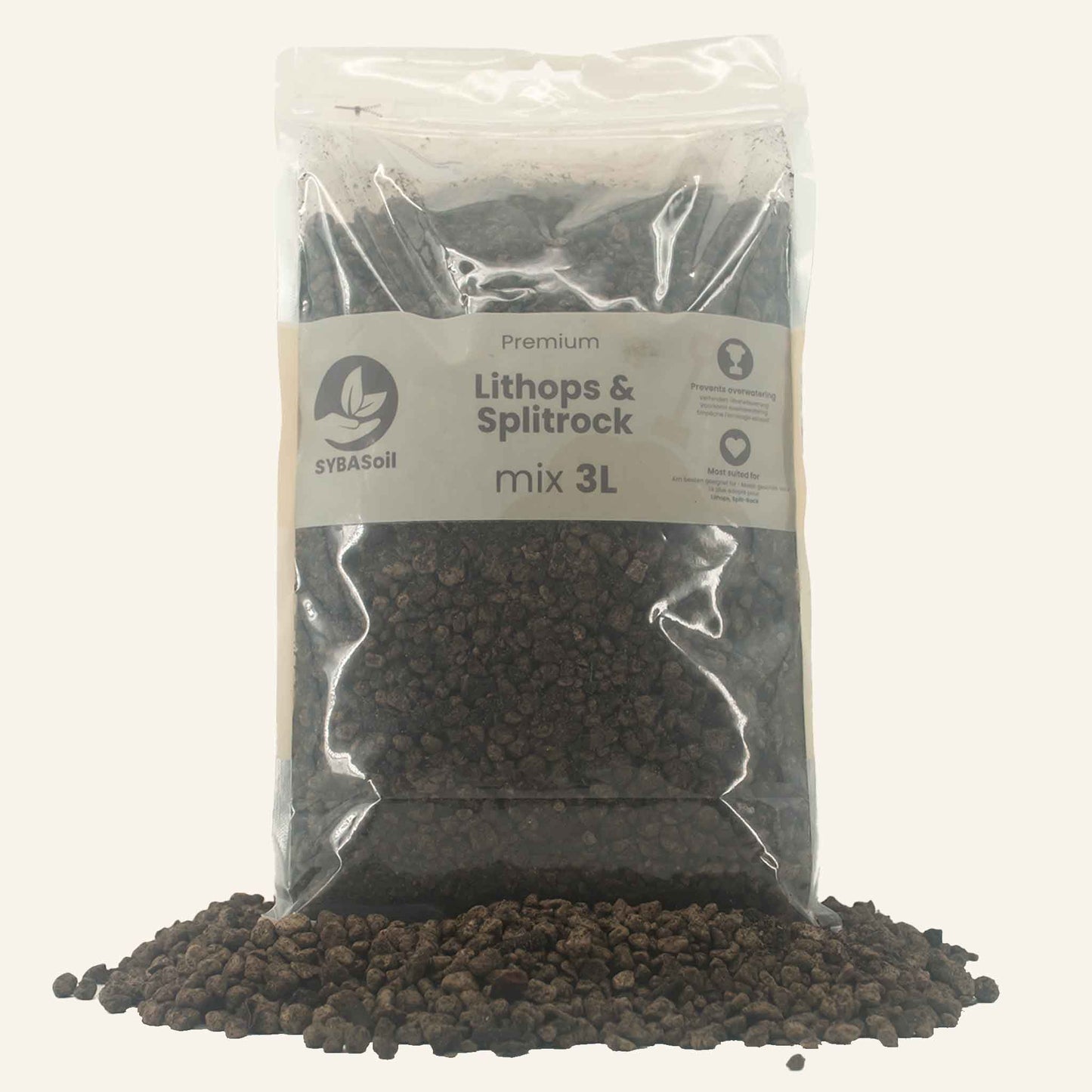
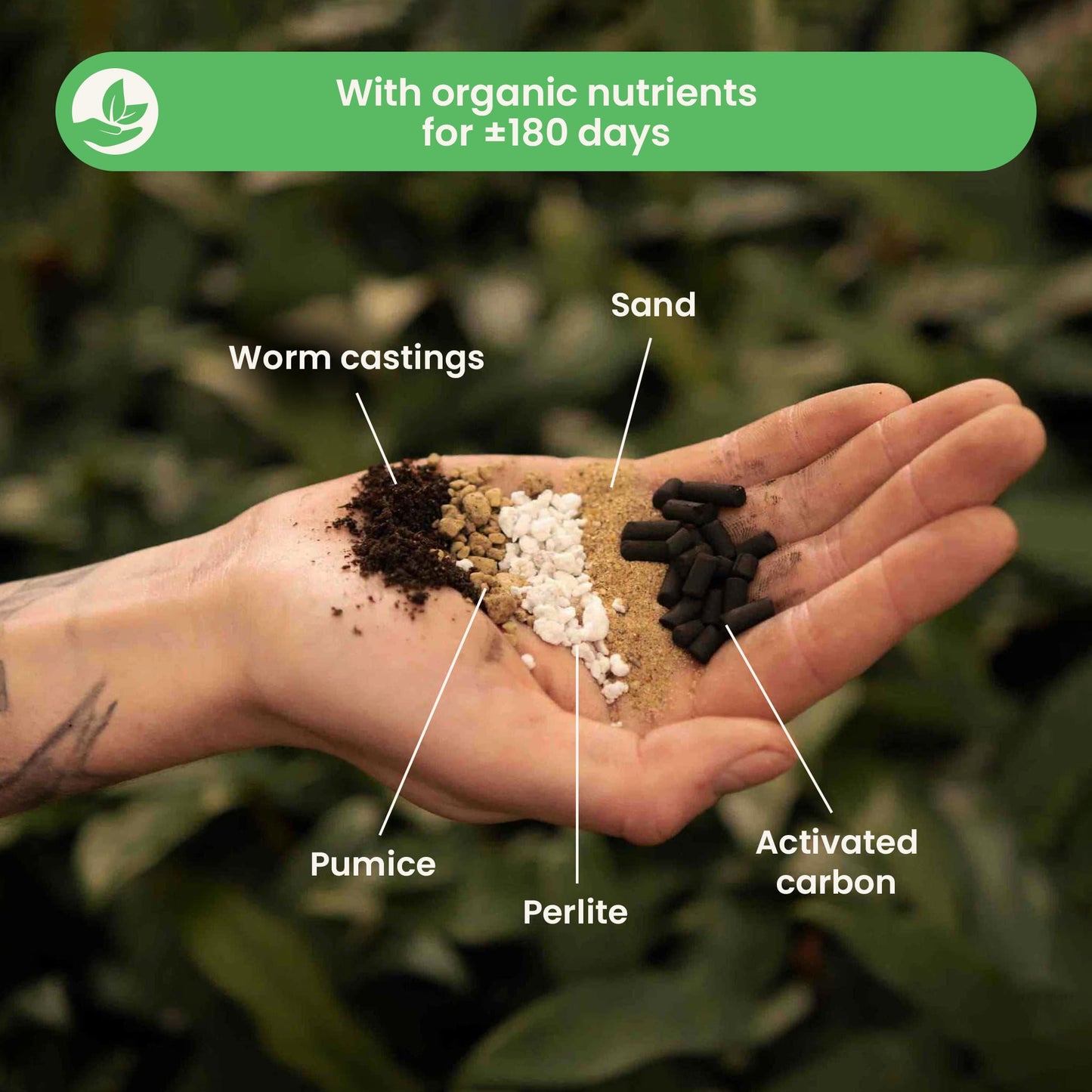
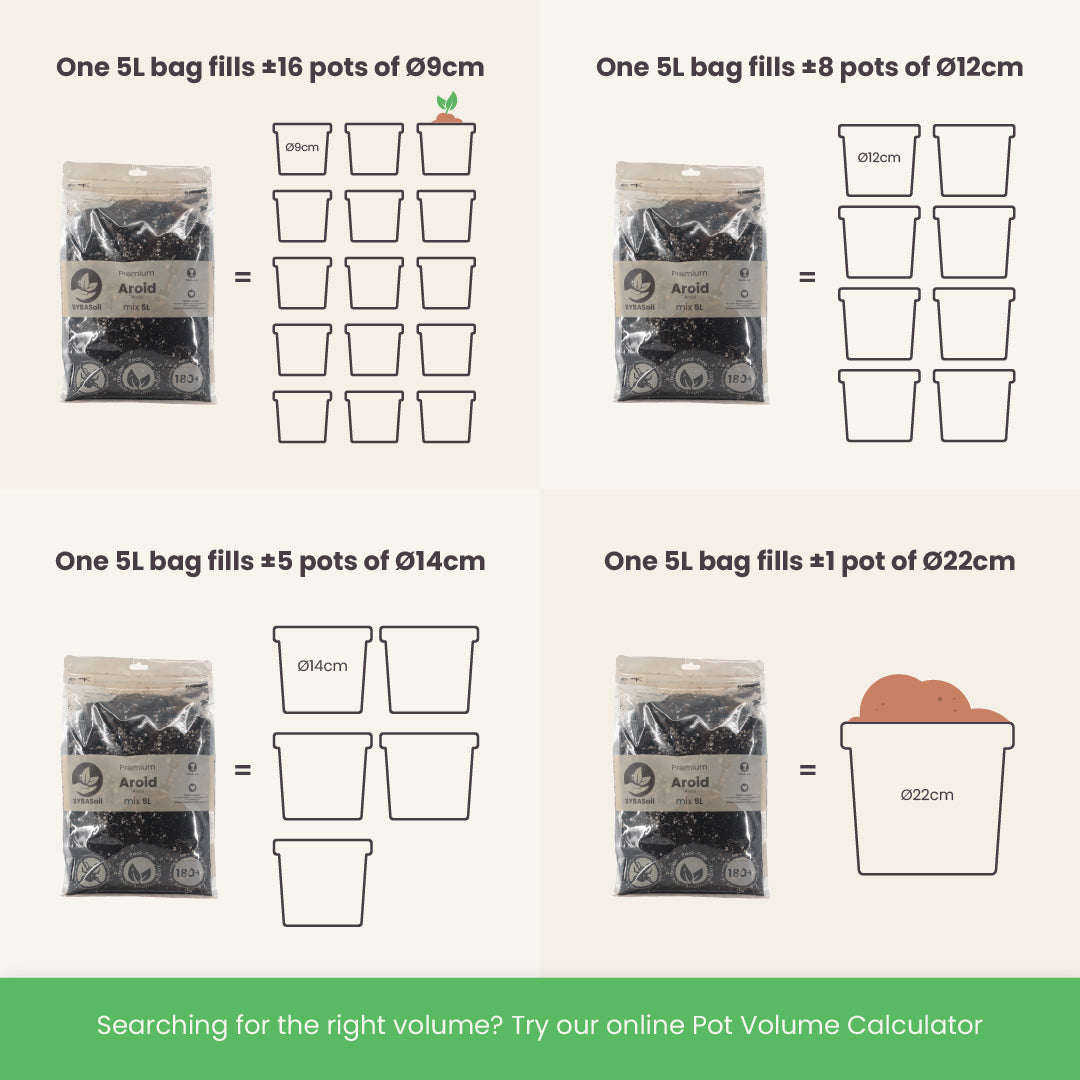
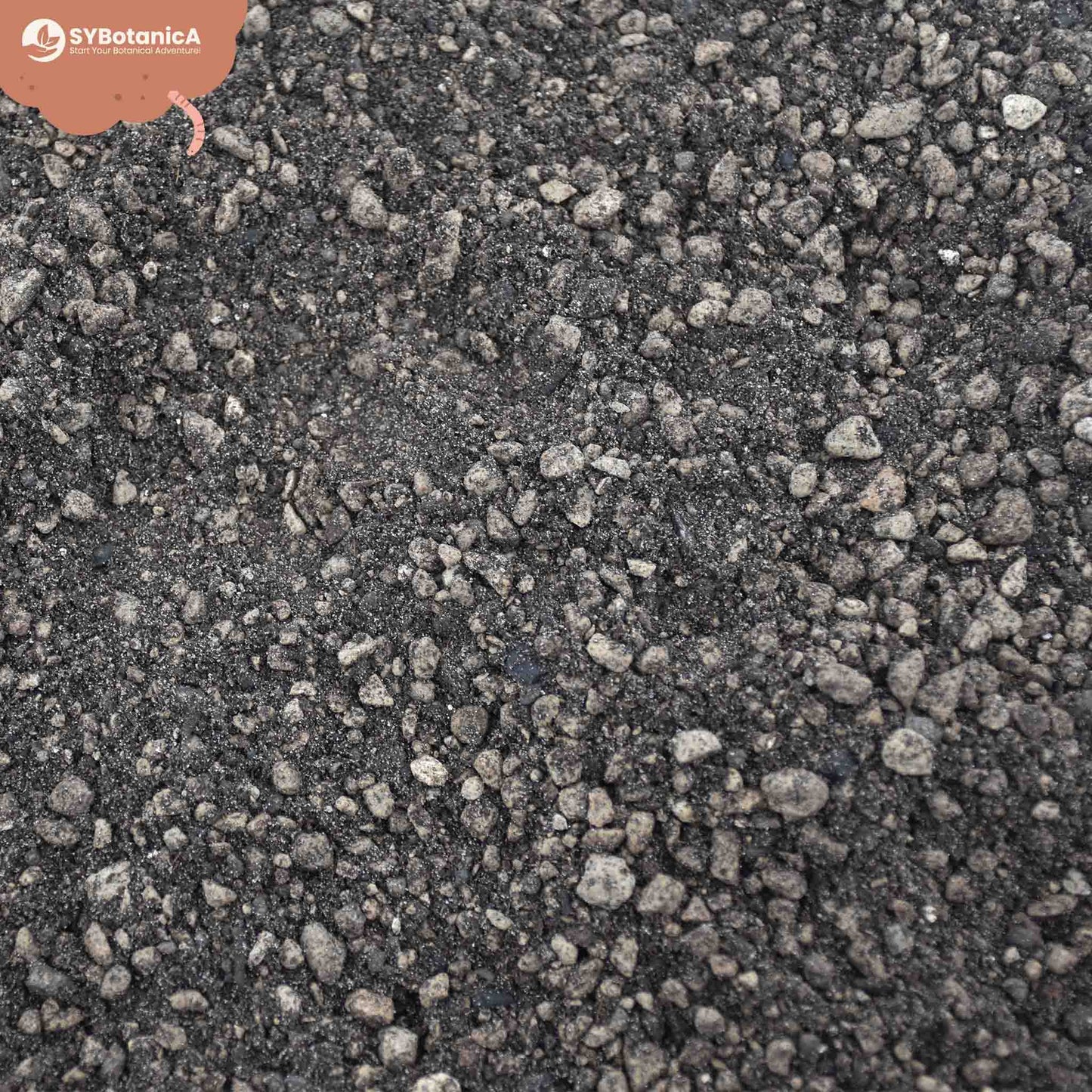
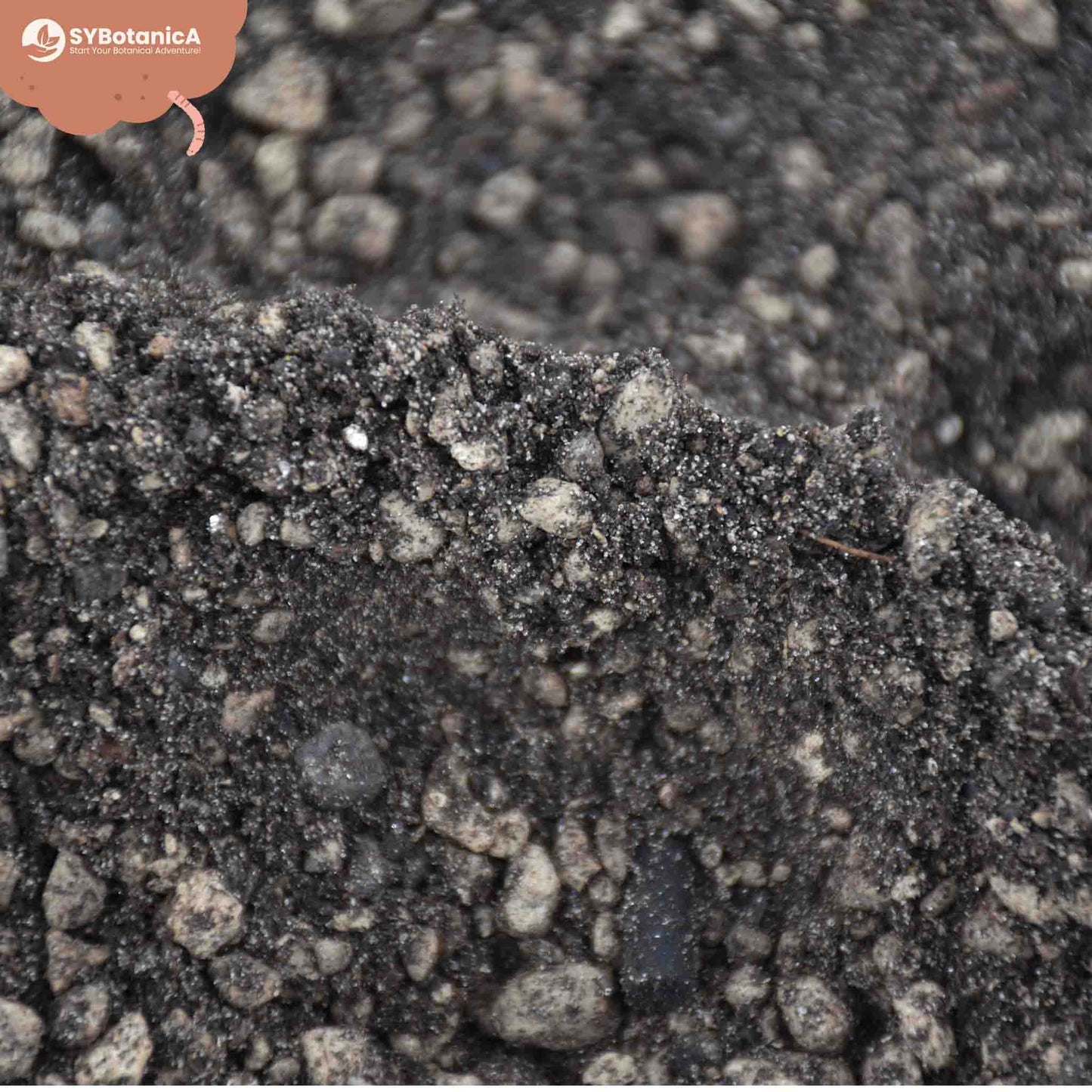
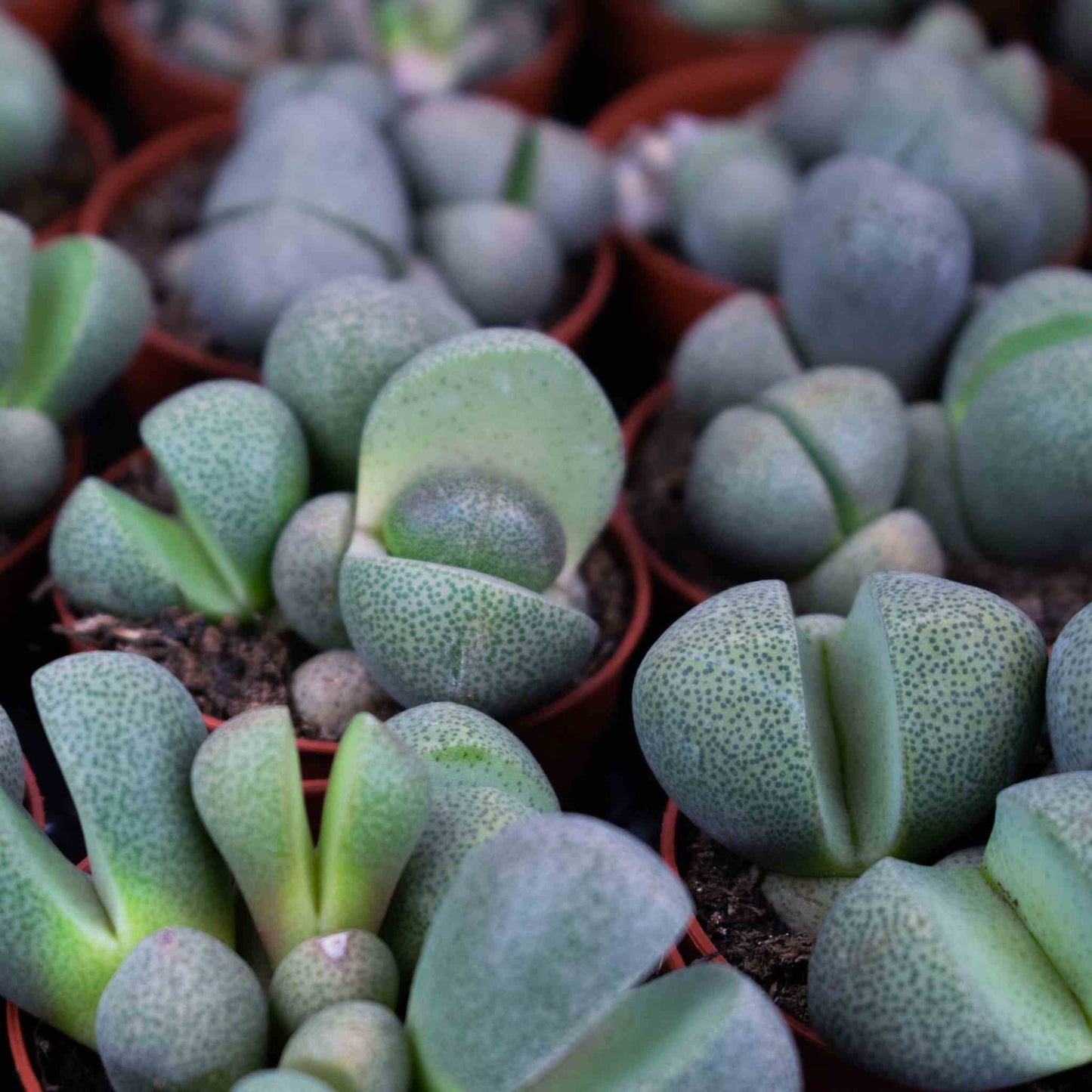
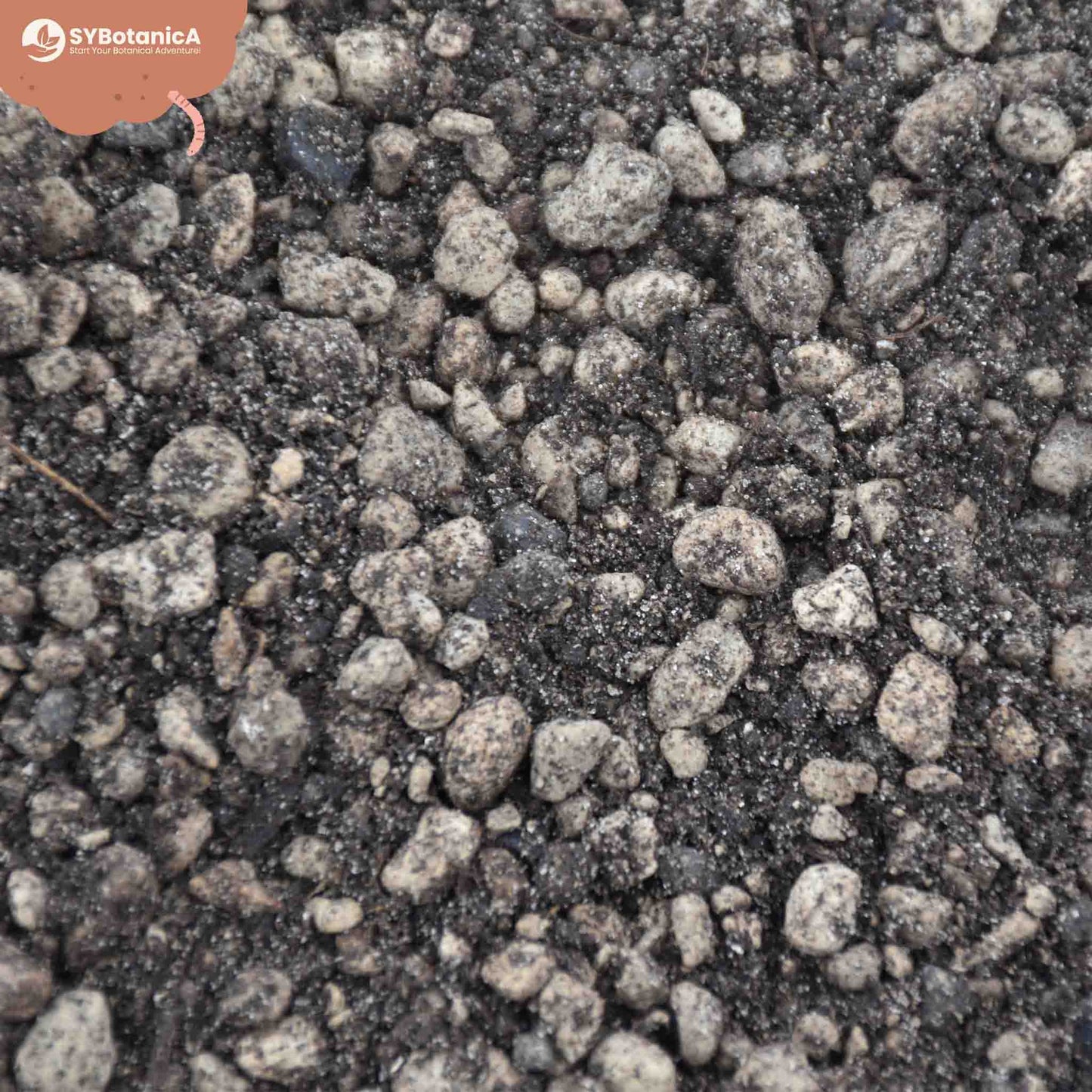
Helps prevent mould & root-rot
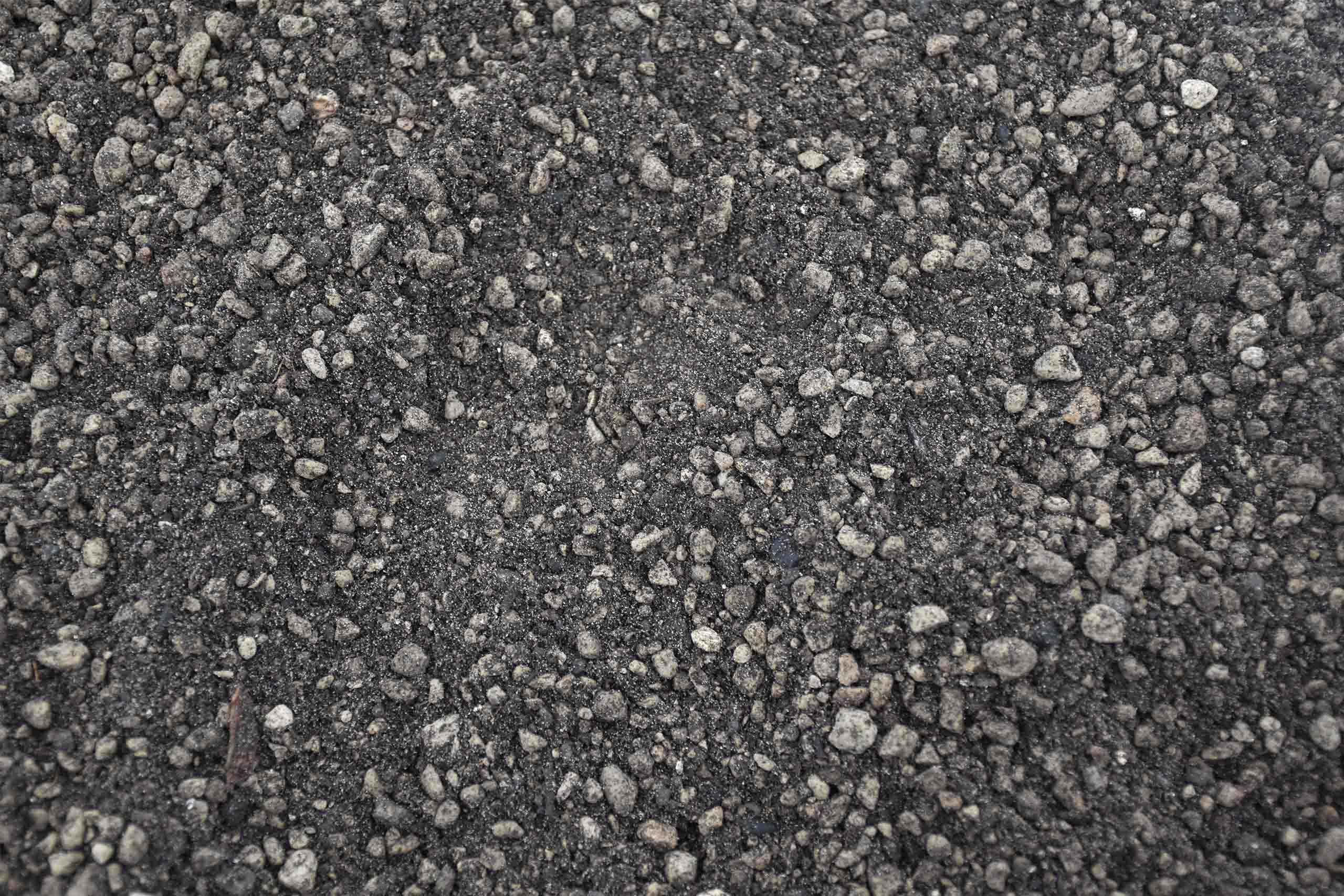

Designed to make your plant-care easier
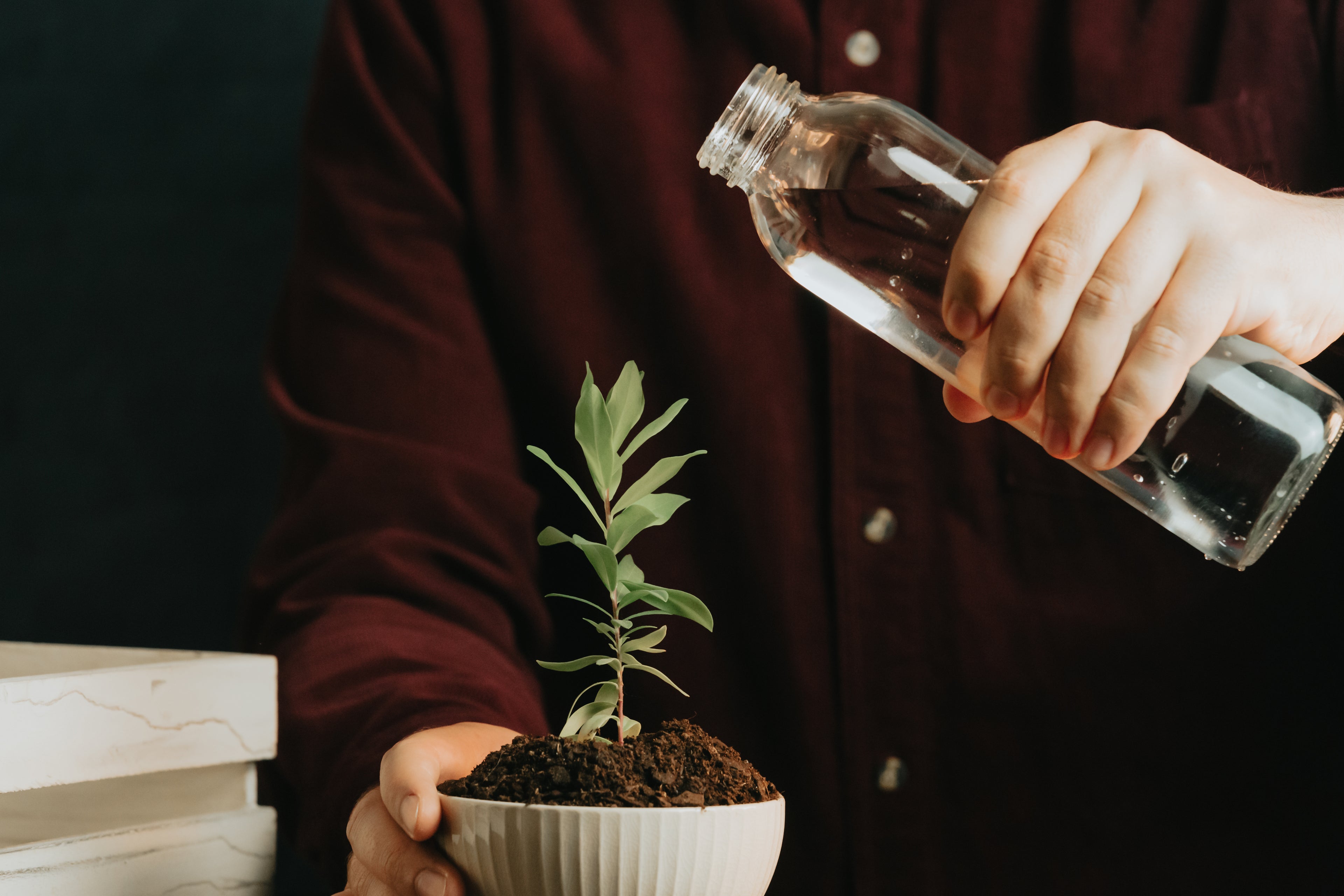

Soil to make your Lithops happy!
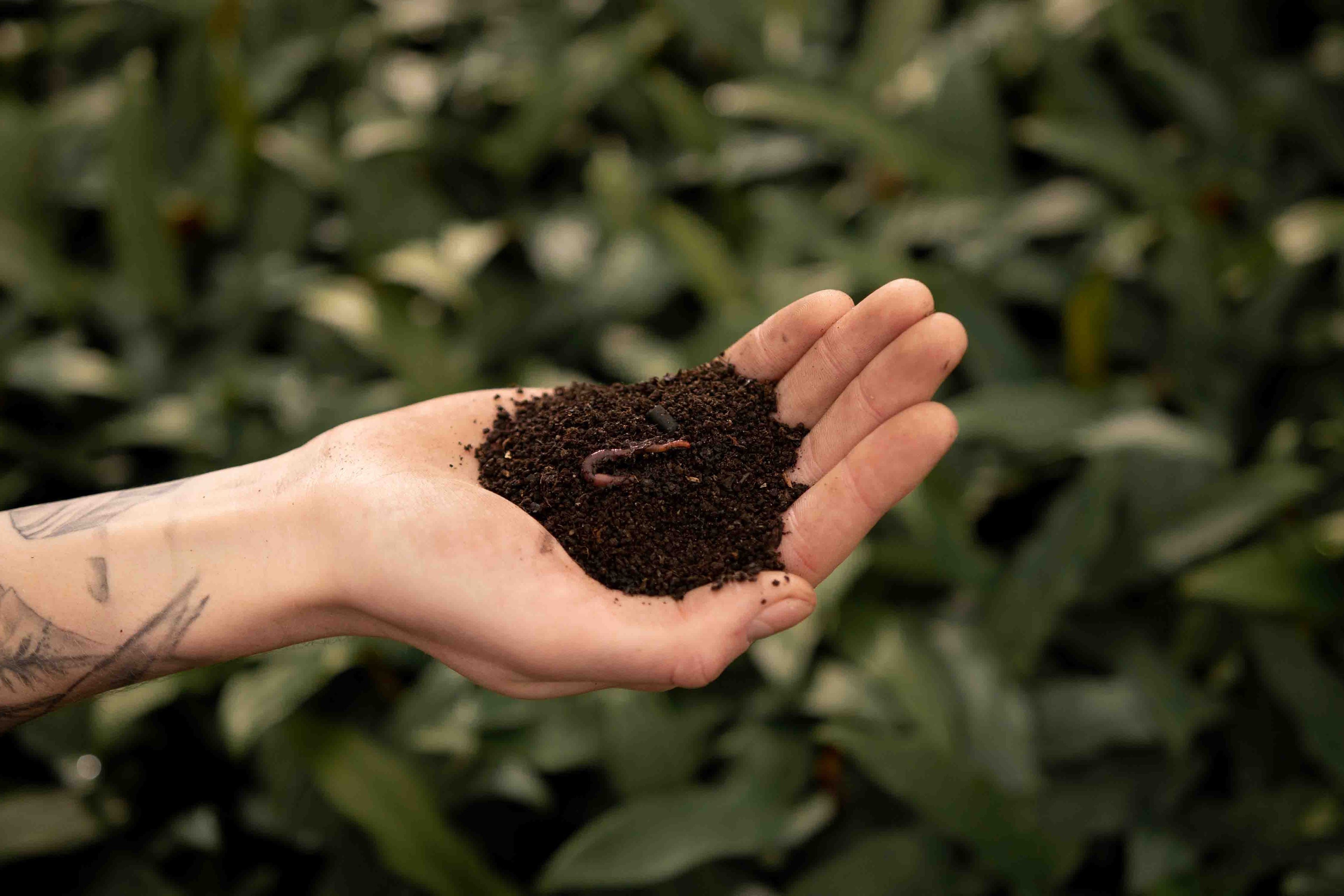

Good for your plants & nature!
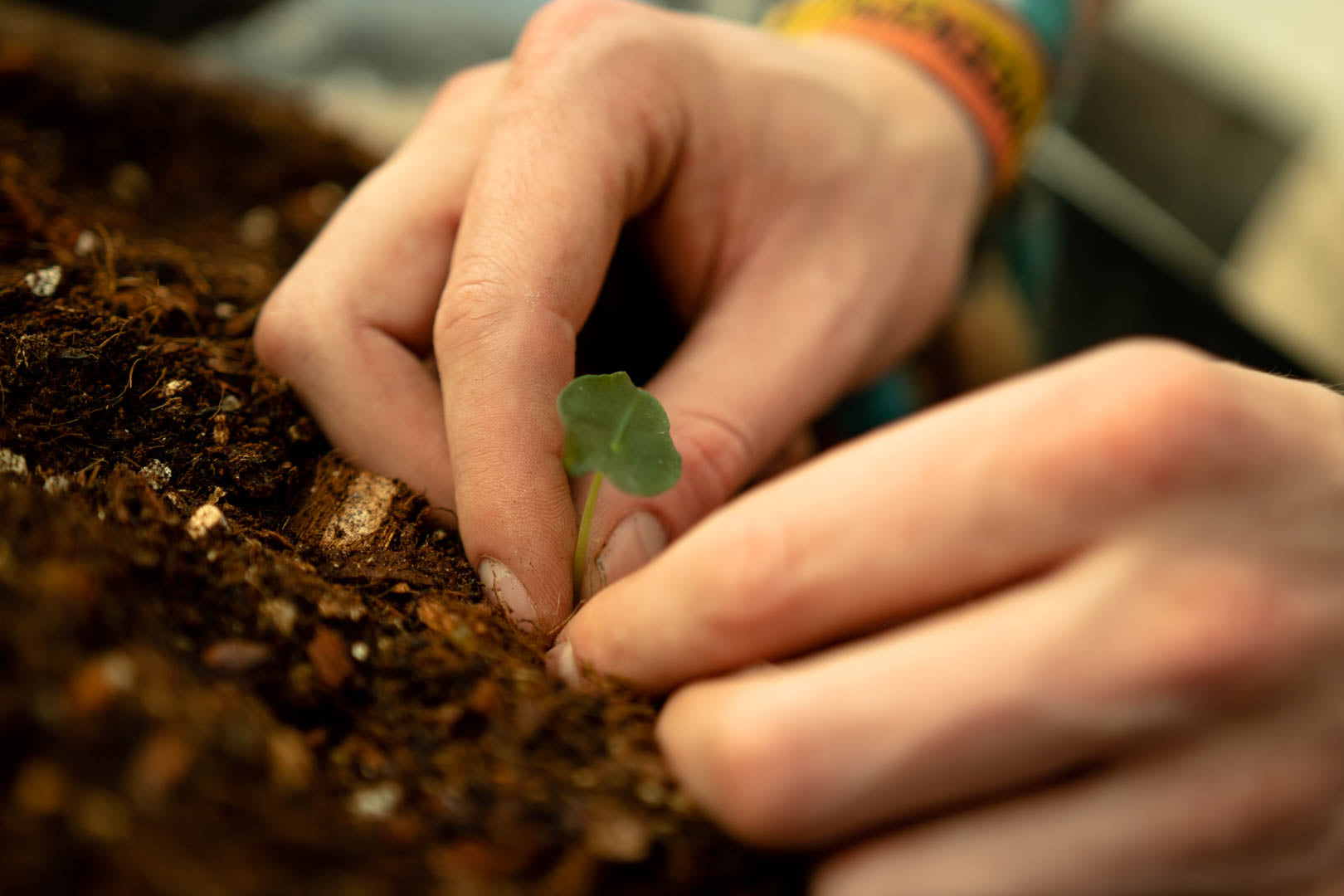

Check out this pot volume calculator tool to calculate how much Lithops mix you need.
The nutrients in SYBASoil will run out in ~6 months on average.
Check out our fertiliser line SYBASupport.
You can store SYBASoil for about 2 years. Make sure to store it cool, dark and closed off. The effectiveness of the nutrients can degrade over the years. Simply add some fresh worm castings to give the soil new life.
We recommend repotting once any of these things happen:
- You see roots growing out of the bottom of the pot
- The soil dries very quickly between watering
- The plant is top-heavy and wants to fall over
- Roots are pushing the plant up and out of the container
- Every 1 to 2 years
Our packaging can be recycled at your local plastic recycling facility.
You can also re-use it for storage, or leave a little soil and use it as a propagation box!
Let the soil dry out completely (lift the pot to feel the weight, it should be a lot lighter than after watering) before watering again.
We guarantee a 100% satisfaction! Our mission is to help you get happy plants.
If for some reason we fail to do this, just contact us via info@sybotanica.com or return your items hassle-free within 30 days.
Not convinced? Check out our Trustpilot reviews
100% Satisfaction Guarantee Or Your Money Back !
Order before 16:30 on working days = Shipped today
The expert in soil